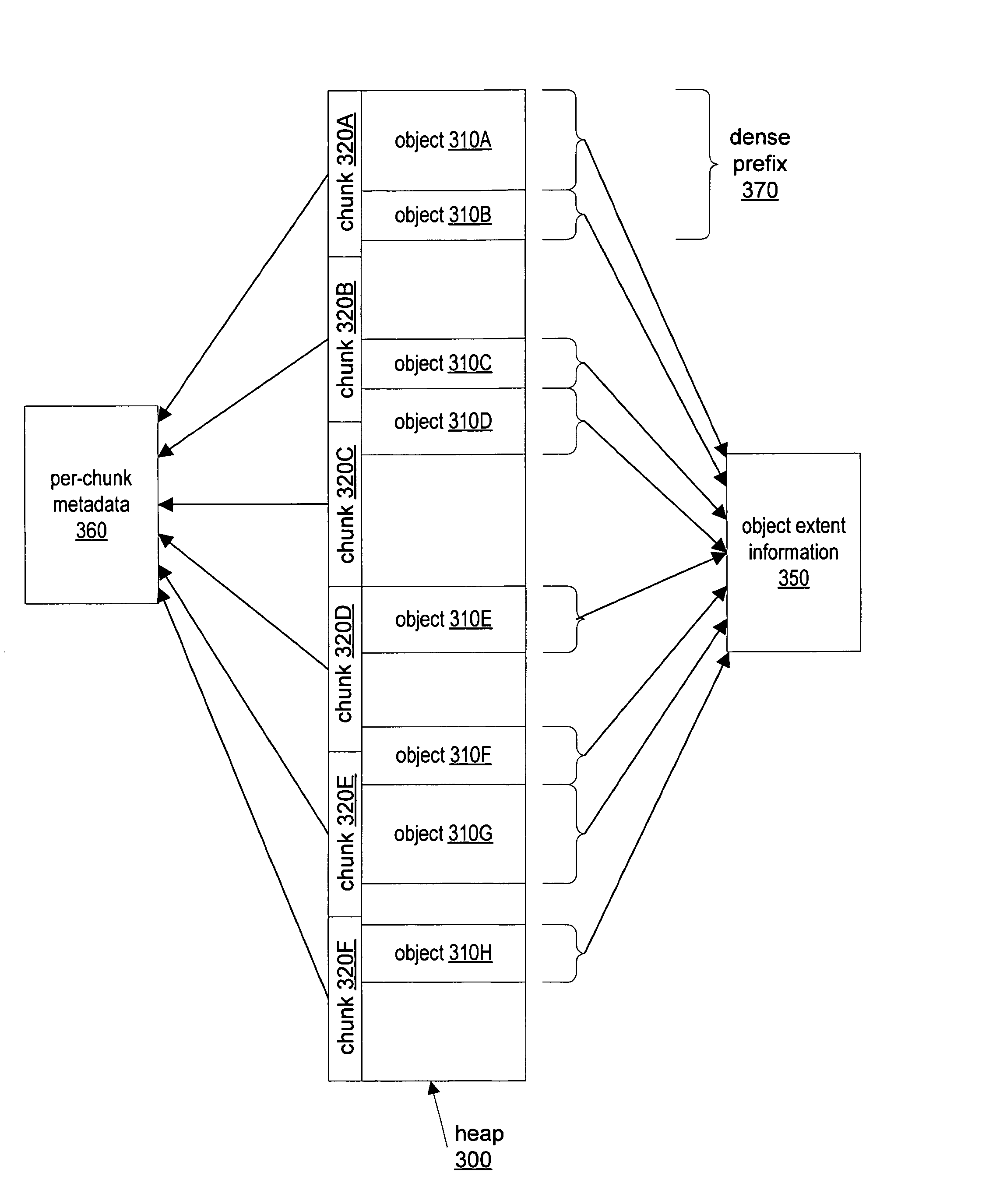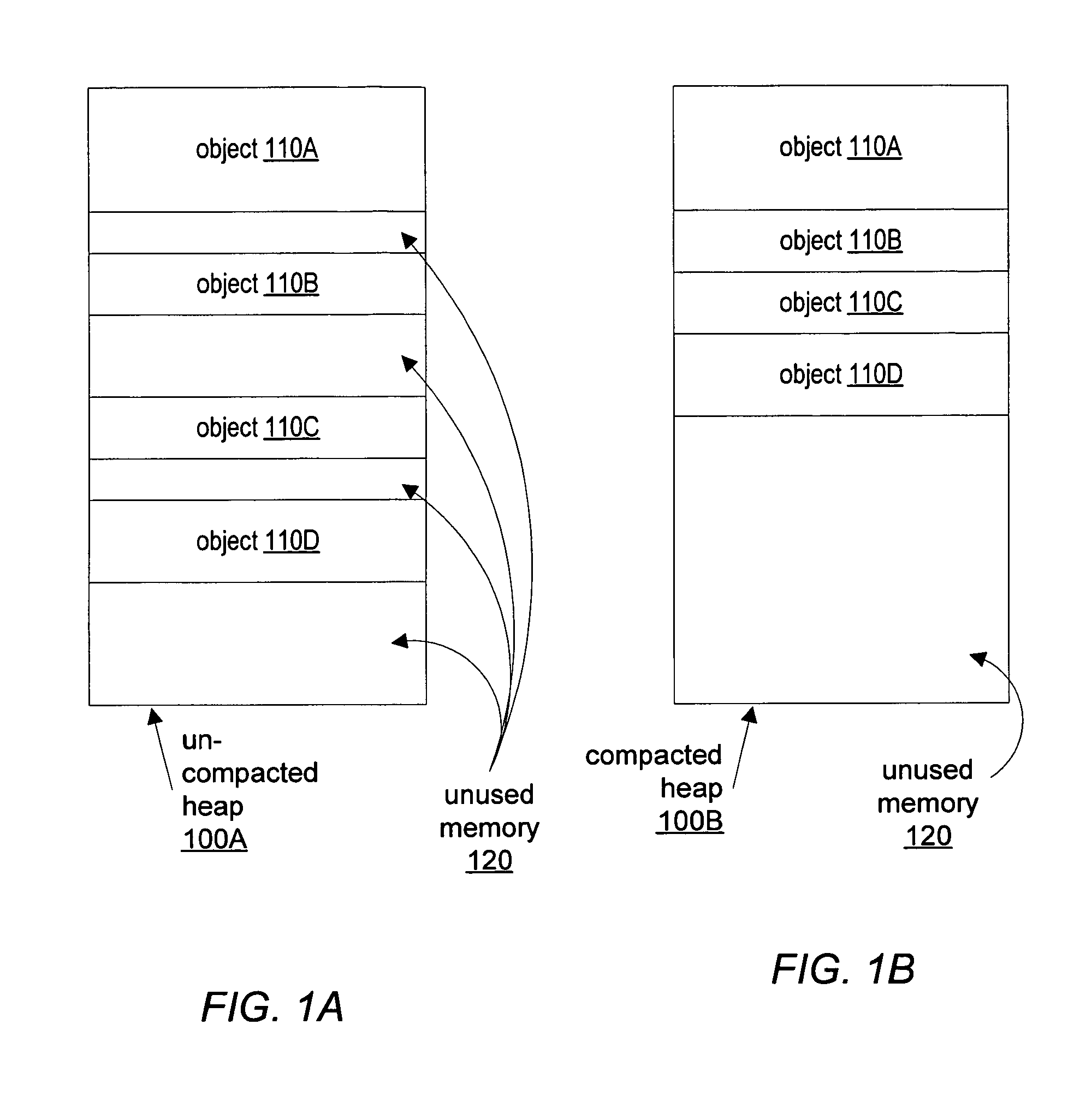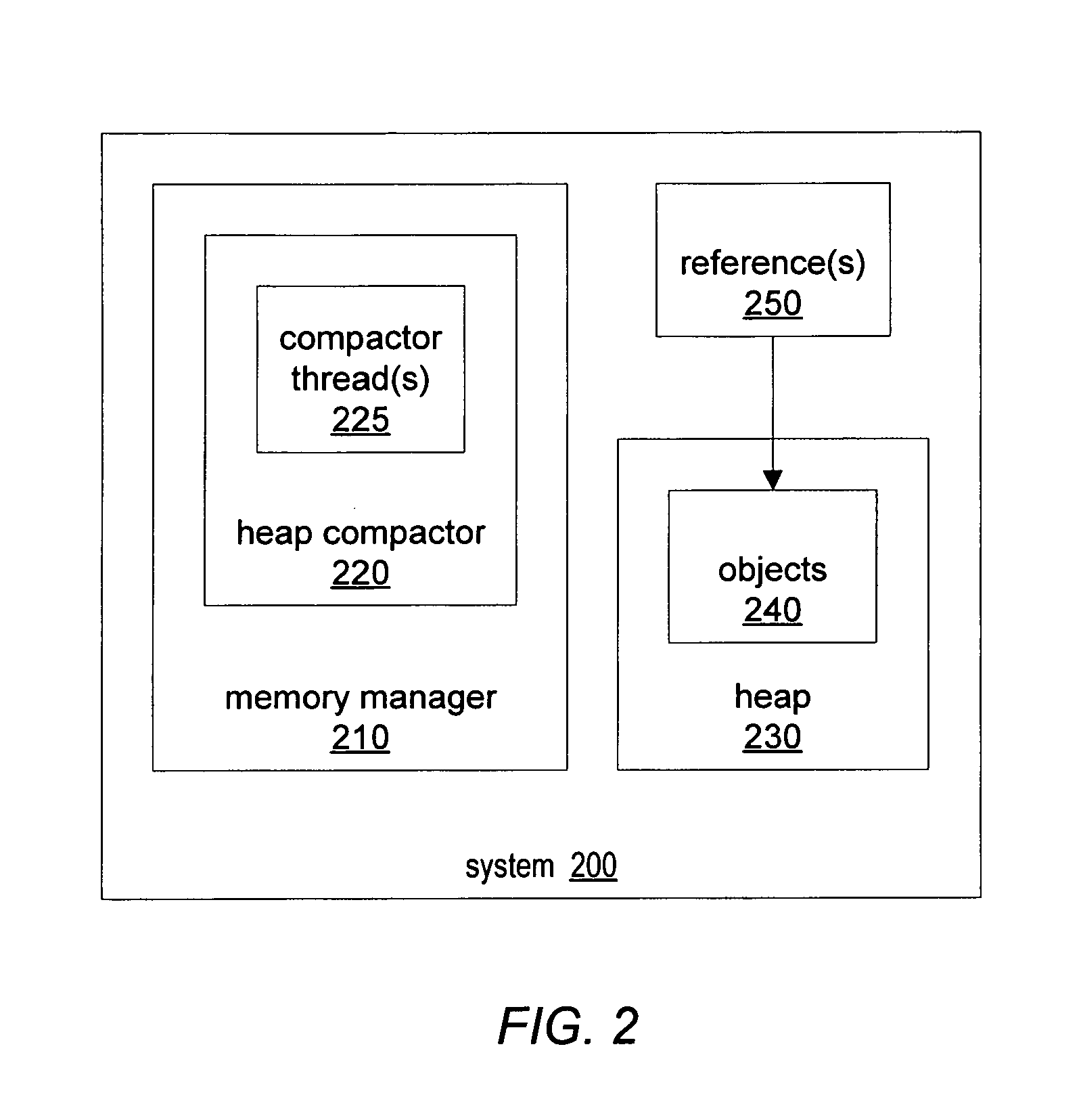Two-pass sliding compaction
a technology of memory and compaction, applied in the field of memory management, can solve the problems of increasing the memory requirements of multiple applications, difficult to share the available memory space among multiple applications, and consuming a lot of effort in the task of allocating and managing memory,
- Summary
- Abstract
- Description
- Claims
- Application Information
AI Technical Summary
Benefits of technology
Problems solved by technology
Method used
Image
Examples
Embodiment Construction
[0029]Two-pass sliding compaction, as described herein, may involve compacting a memory heap of a computer system. FIGS. 1A and 1B illustrate such a heap before (FIG. 1A) and after (FIG. 1B) two-pass sliding compaction as described herein. For example, a heap compactor process may compact un-compacted heap 100A including memory objects 110A, 110B, 110C, and 110D, as illustrated in FIG. 1A. Un-compacted heap 110A may also include one or more sections of unused memory 120. As noted above, a heap may become fragmented because of de-allocating or freeing memory objects no longer needed by applications or other processes of the system. Two-pass sliding compaction may analyze un-compacted heap 100A to determine the starting and ending addresses of each of objects 110A-D and may record this object extent information in any of various manners, including, in one embodiment, an object extent bitmap, as will be discussed in more detail below.
[0030]The heap compactor process implementing two-pa...
PUM
 Login to View More
Login to View More Abstract
Description
Claims
Application Information
 Login to View More
Login to View More - R&D
- Intellectual Property
- Life Sciences
- Materials
- Tech Scout
- Unparalleled Data Quality
- Higher Quality Content
- 60% Fewer Hallucinations
Browse by: Latest US Patents, China's latest patents, Technical Efficacy Thesaurus, Application Domain, Technology Topic, Popular Technical Reports.
© 2025 PatSnap. All rights reserved.Legal|Privacy policy|Modern Slavery Act Transparency Statement|Sitemap|About US| Contact US: help@patsnap.com



